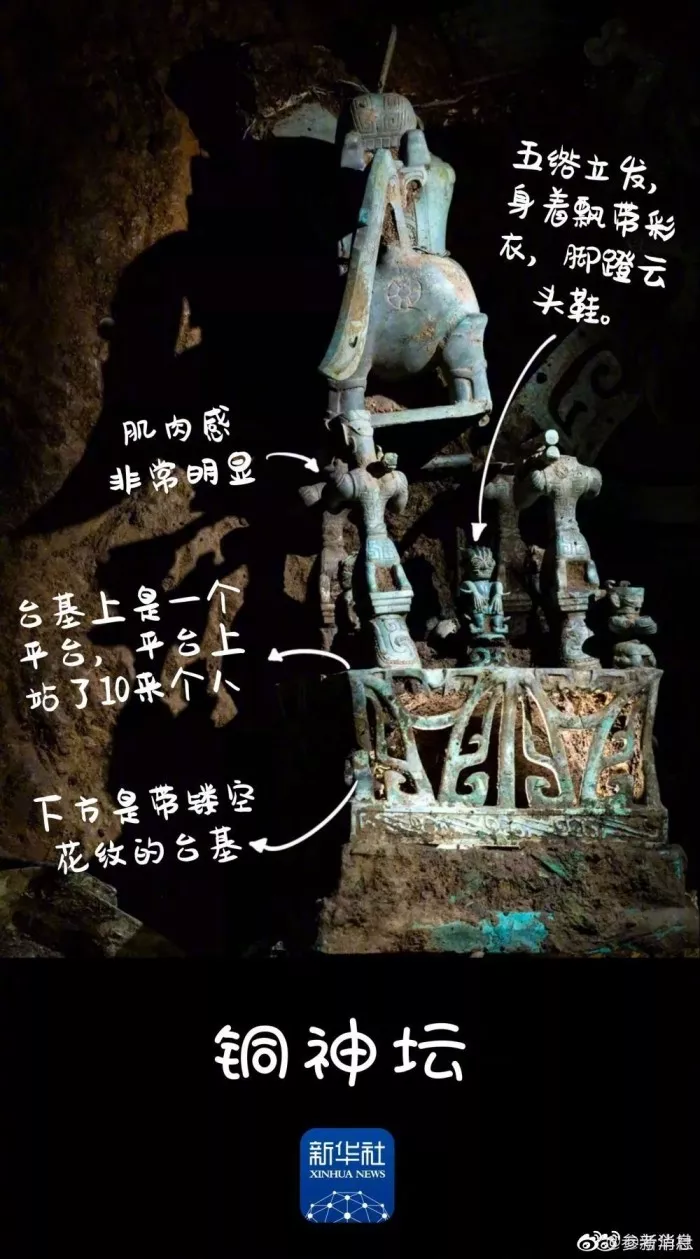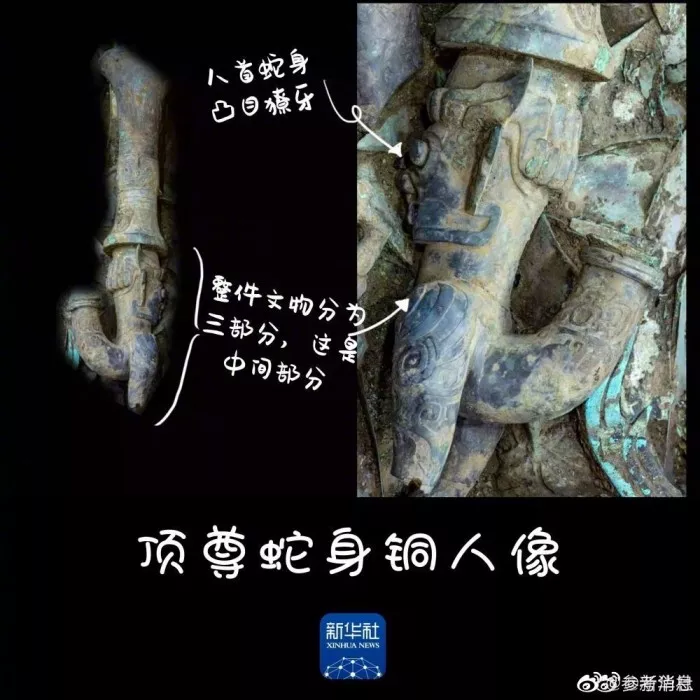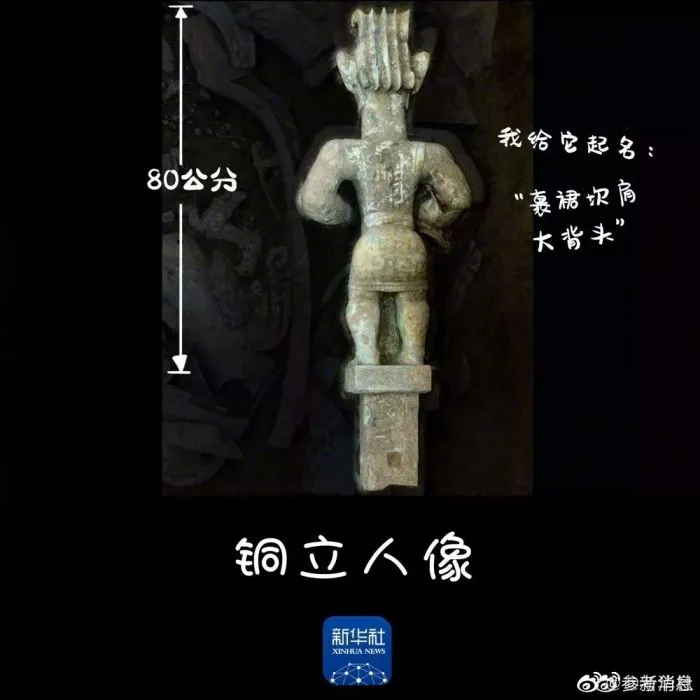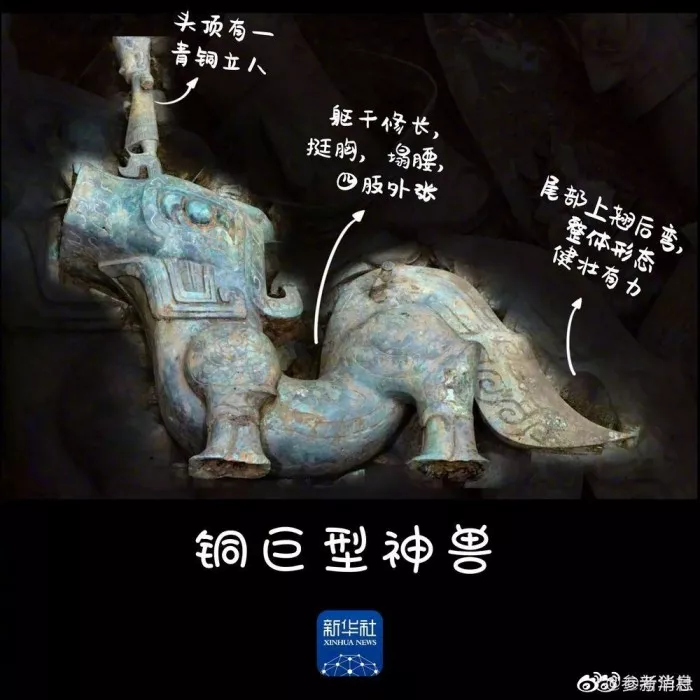On June 13, Sanxingdui announced a batch of shocking cultural relics. The tortoise back shaped grid shaped utensils, the bronze statue of a snake on the top, and the bronze pig nose dragon shaped utensils... Among them, the copper giant mythical beast is 95 cm high, which is the largest mythical beast found in Sanxingdui at present. Up to now, nearly 13000 numbered cultural relics have been unearthed from six "sacrificial pits" in Sanxingdui. For so many cultural relics with advanced design unearthed in Sanxingdui, netizens also lamented one after another. How did the ancients of thousands of years do it?
Relevant archaeological experts said that the reason why Sanxingdui became popular overnight was because of its strong cultural heritage. Sanxingdui site is located at the Western foot of Longquan in the north of Chengdu Plain, and is located in the fan-shaped plain formed by the composite alluvial of Tuojiang River and Minjiang River. There is Yazi River in the north and Mamu River in the southwest, which is an ideal area for agricultural cultivation
Sanxingdui culture came to an abrupt end, and the earthquake and flood may be one of the culprits. Tuojiang River and Minjiang River, which originate from the northwest of Sichuan, have huge water volume, complex water systems and strong potential energy. According to the meteorological data, the ancient Shu region was in the second and third new ice ages 5000 to 3500 years ago. The temperature was 2 to 3 ℃ higher than now. The climate was humid and the rainfall was abundant.
What is more terrifying is that the source of Tuojiang River and Minjiang River is located in the Longmenshan geological fault zone. This 500 kilometer long and 70 kilometer wide fault zone is extremely unstable and often makes troubles. Since 1169 A.D., there have been 25 destructive earthquakes, including 20 earthquakes of magnitude 6 or above on the Richter scale. Over the past half century, there have been more than 10 destructive earthquakes with m ≥ 7 in this area.
In ancient times, the people believed that sacrificial rites attached great importance to it. Any damage to gods or artifacts was regarded as an act of blasphemy against the gods, otherwise it would lead to the abandonment and revenge of the gods. The situation in the sacrificial pit is extremely abnormal. The act of destroying artifacts on a large scale is not the act of the native race, but must come from the conquest of other races.
The archaeologists at the site found that "Sanxingdui No. 1 sacrificial pit not only uses the 'Yi' sacrifice, but also buries the offerings after the 'burnt fire', which is very similar to the sacrificial rites of the Shang Dynasty. About 3 cubic meters of bone dregs crushed by fire were cleared from the pit, which is likely to be a group of witches exterminated together with the gods of the ancient Shu state, in order to prevent the ancient Shu state from continuing to hold God worship. In Shang Dynasty, it was entirely possible to adopt the method of sacrificing human beings or sacrificing human beings. Judging from this, the defeat of the war with the Shang Dynasty may have caused the annihilation of Sanxingdui culture.
The unexpected appearance of Sanxingdui site broke the pattern of the unification of Chinese culture and provided new evidence for the theory of multi-source integration. Compared with the curiously shaped bronzes, the disappearance of Sanxingdui culture also aroused people's curiosity. Experts also said that the surprise brought by Sanxingdui to us has just begun





